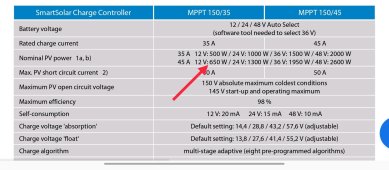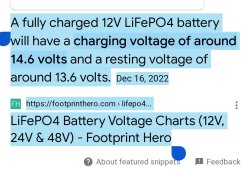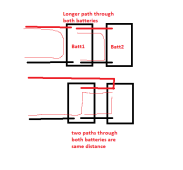Ok. I've rewatched the video, and read the entire thread.
I have to ask some questions that may seem insulting, but please don't take offense.
When you had voltages spiking really high, did you have your batteries in series or in parallel? You don't say, but it seems that you are running a 12v system. If you connected your batteries in series, it might explain those voltage readings.
Do you have your panels in series or in parallel?
Your panels seem capable of producing over 50 amps at 12v, whereas your charge controller can only produce 45 amps. I don't know if this can cause issues. Probably not, because you are not over the CC's voltage limit.
The charge controller is recommended a max of 650 watts@12v. In winter, your array is probably capable of producing 700 watts or 750 or more. Panels produce more power when very cold. This could be an issue. You may want to test this by disconnecting one panel.
What gauge are the wires from the circuit breaker to the cc? Do they get warm? They seem small.
Apologies about the heater pad. I did not realize that you are not on site for long periods. The heater pad would be recommended for when you are in residence. You would want to run the heater when you are onsite, primarily, because prolonged bad weather could cause the heater to drain the batteries. However, if the cc can power the inverter without draining the batteries, like if you had a battery protection circuit, then you could leave the inverter and the heater turned on at all times, and the batteries would be warmed up any time the weather was good. Once warmed, they could charge.
As to parts of the battery being exposed to the cold, wrap an old sleeping bag around them, if you must. It's really important to keep them warm, as if us saying that over and over hasn't gotten that point across.
Please take pictures of your batteries when they are both connected to the system so that we can observe your wiring.
When commenters here ask for your specs, trust that we are asking for a reason. We simply cannot advise on certain details without information. Every single part of a system must be considered. A member will not ask for non-relevant information. If someone asks for information, and you refuse to render that information, then a member will probably write you off, and will cease offering their help. If you want us to help you, then you must help us understand your whole system.
It would be helpful if you could tell us what kind of panels you are using, beyond simply their wattage. If you have a picture of the spec sheet from the back of the panel, that would be helpful, too.
Good luck. We want to help.






